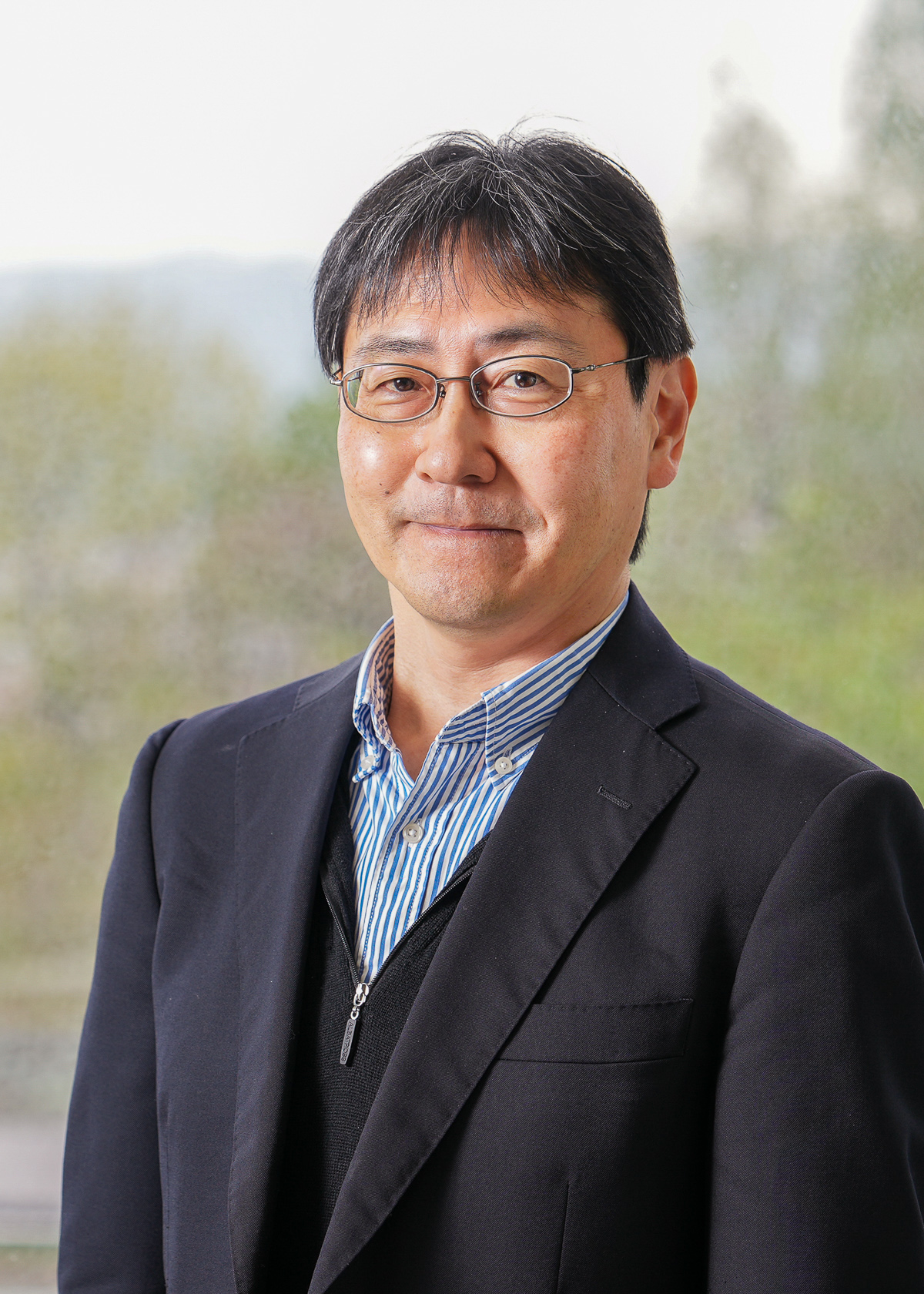PI Kenji Tajima Associate Professor
PI message
There are various types of living organisms, including humans, and each has various functions. Living organisms also produce macromolecules such as proteins and polysaccharides, which can be utilized as analytical, environmentally recyclable, and medical materials. Our laboratory develops materials, analytical methods, and therapeutic methods to solve various problems based on bacteria, cells, and the proteins, polysaccharides, and other biomolecules they produce. Recently, global warming caused by greenhouse gases from human social activities, abnormal weather, and environmental destruction caused by macroplastics have become major problems, and we hope to develop basic technologies to solve these problems.
PI Hirofumi Tani Associate Professor
PI message
Analytical chemistry, my specialty, is a research field related to chemical methodology.
Analytical methods developed based on a wide range of scientific knowledge, including social science as well as basic and applied chemistry, are indispensable for the development of chemical research. In addition, they are used in all kinds of fields, such as the environment, medicine, and industry, and supporting our life.
Create a new chemical methodology with us!
Research
In Biomolecular Chemistry Laboratory, we develop materials, analytical methods, and medical treatment methods to solve various problems in modern and future society based on bacteria/cells and biomolecules such as proteins and polysaccharides. Specifically, we are conducting the following research; Bioluminescence-based assay using microdevices and paper devices, New analytical method based on control of luciferase activity, Highly sensitive bio/chemiluminescence analysis method using molecular assembly as reaction media, Application to analytical chemistry of oscillating chemiluminescence, Elucidation of the mechanism of cellulose synthesis in bacteria, Mass preparation of microbial nanocellulose (NFBC) using fermenters, Creation of high-strength circulating polymer materials using NFBC, Microgravity space using microorganisms (International Space Station) Preparation of cellulose, Development of high sheer stress-resistant mammalian cell, Development of mammalian cell growth promoting substances derived from fish blood, Effective culture method for mammalian cells using clock genes.
Member
-
Kenji TajimaAssociate ProfessorResearch FieldPolymer chemistry, Natural polymer chemistry, Molecular biology, Genetic engineering, Microbial engineering
-
Hirofumi TaniAssociate ProfessorResearch FieldBioanalytical Chemistry
Main Research Achievements
- K. Nishiyama, R. Mizukami, S. Kuki, A. Ishida, J. Chiba, H. Kido, M. Maeki, H. Tani, M. Tokeshi, Biosens. Bioelectron., 198, 113832 (2022).
DOI: 10.1016/j.bios.2021.113832 - K. Tajima, T. Imai, T. Yui, M. Yao, I. Saxena. Cellulose, 29, 2755–2777, (2022).
DOI: 10.1007/s10570-021-04225-7 - M. Fukaura, K. Kiriaki, M. Kayier, M. Fujiwara, M. Takagi. Cytotechnology. 74, 193-200, (2022).
- K. Nishiyama, K. Takahashi, M. Fukuyama, M. Kasuya, A. Imai, T. Usukura, N. Maishi, M. Maeki, A. Ishida, H. Tani, K. Hida, K. Shigemura, A. Hibara, M. Tokeshi, Biosens. Bioelectron., 190, 113414 (2021).
DOI: 10.1016/j.bios.2021.113414 - M. Takagi, S. Jimbo, T. Oda, Y. Goto, M. Fujiwara. J. Biosci. Bioeng. 131, 183-189, (2021).
- R. Takahama, H. Kato, K. Tajima, S. Tagawa, T. Kondo. Biomacromolecules, 22, 4709-4719, (2021).
DOI: 10.1021/acs.biomac.1c00987 - S. Akagi, H. Ando, K. Fujita, T. Shimizu, Y. Ishima, K. Tajima, T. Matsushima, T. Kusano, T. Ishida. Int. J. Biol. Macromol., 174, 494-501, (2021).
DOI: 10.1016/j.ijbiomac.2021.01.201 - T. Komatsu, R. Maeda, M. Maeki, A. Ishida, H. Tani, M. Tokeshi, ACS Sens., 6, 1097 (2021).
DOI: 10.1021/acssensors.0c02367 - B. Fu, M. Fujiwara, M. Takagi. Cytotechnology. 72, 433-444, (2020).
- K. Tajima, R. Kusumoto, R. Kose, H. Kono, T. Matsushima, T. Isono, T. Yamamoto, T. Satoh, Biomacromolecules, 18, 3432-3438, (2017).
DOI: 10.1021/acs.biomac.7b01100 - S.-Q. Hua, Y.-G. Gao, K. Tajima, N. Sunagawa, Y. Zhoua, S. Kawano, T. Fujiwara, T. Yoda, D. Shimura, Y. Satoh, M. Munekata, I. Tanaka, M. Yao, PNAS, 42, 17957-17961, (2010).
DOI: 10.1073/pnas.1000601107
Contact
tani(at)eng.hokudai.ac.jp
ktajima(at)eng.hokudai.ac.jp



